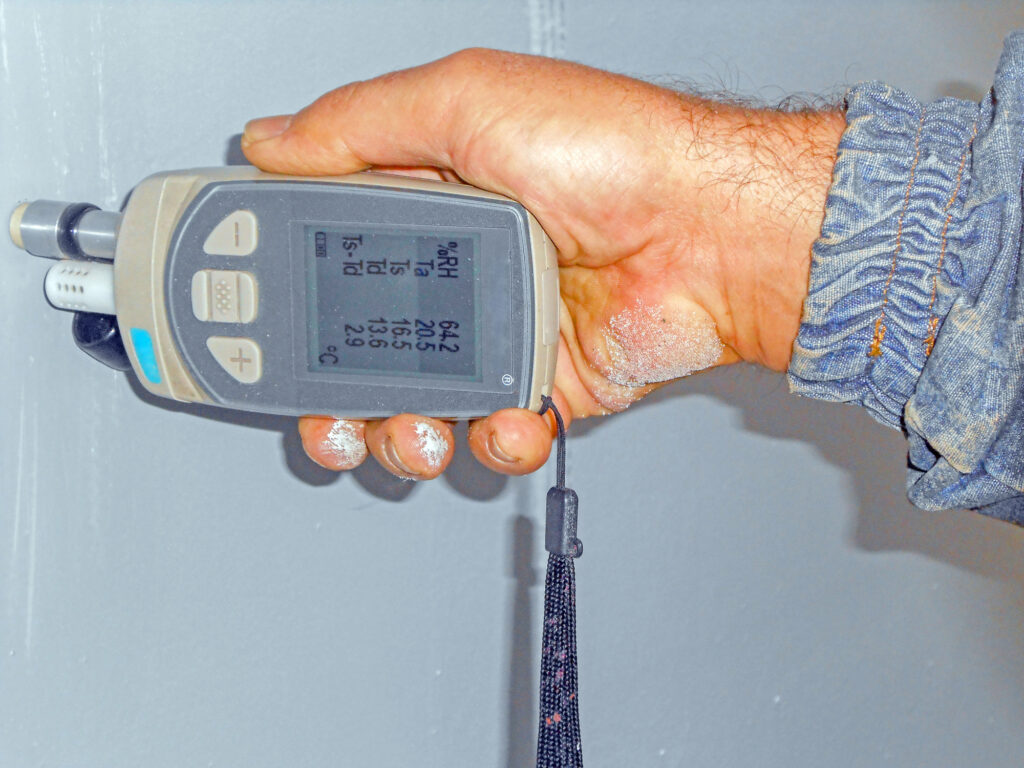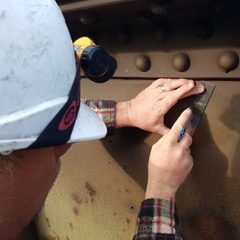Climate plays a crucial role in the successful application of industrial coatings. Numerous instances of coating failure have been linked to coatings applied when climatic conditions weren’t within the specified range. At Toronto Industrial Painting, an AMPP Level 3 certified surface inspection company, we recognize the importance of accurately measuring Relative Humidity and Dew Point temperatures in the field to prevent such failures.
Understanding Relative Humidity and Dew Point
Relative Humidity (RH) is the measure of how much moisture is in the air compared to the maximum amount of moisture the air could hold, given in percentage terms. Dew Point temperature is the temperature at which the air becomes fully saturated or reaches 100% RH. As a general rule, most project specifications require an RH below 85% and a minimum 5°F difference between the surface temperature and the Dew Point.
However, accurate measurements become increasingly important when the Humidity is near 85% (or the specified requirement) and the Dew Point/surface temperature spread is about 5°F.
Related: Understanding the Difference Between Quality Assurance and Quality Control
Measuring RH and Dew Point: Methods and Accuracy

There are two fundamental methods of measuring RH and Dew Point temperatures in the field, as outlined in ASTM E 337, Standard Method for Measuring Humidity with a Psychrometer. The traditional method employs a sling psychrometer, while modern practices favor electronic meters.
Sling psychrometers, used extensively by meteorologists, are generally considered to offer the most accurate method of determining RH and Dew Point. However, even the best psychrometers can expect an error range of 5% to 7%, and those typically used on coating projects may see even greater errors.
These devices measure two parameters – Dry Bulb (DBT or ambient temperature) and Wet Bulb (WBT) temperatures. WBT measures the temperature that results from evaporation, and is directly related to RH. The difference between the wet bulb and dry bulb temperature provides a measure of atmospheric humidity.
Enhancing Accuracy with Electronic Meters and Proper Procedure
Despite the traditional usage of sling psychrometers, we strongly recommend using electronic meters for optimal accuracy. If a sling psychrometer is used, certain steps should be followed to minimize potential errors:
- Ensure the thermometers are reading correctly by inspecting and calibrating them.
- Store the thermometers properly between uses to prevent heat-induced errors.
- Check the condition of the wick – it should be clean, white, and flexible. When possible, use distilled water and replace the wick if it becomes discolored or hard.
- When taking readings, follow a specific procedure, such as facing the wind if present and rotating the sling psychrometer at about 2 revolutions per second for about 90 seconds.
- Check readings in the area to be painted and compare dry bulb readings before and after the process to ensure consistency.
At Toronto Industrial Painting, our certified coating inspection professionals are equipped with the necessary knowledge and tools to conduct these critical measurements. Our commitment to quality and attention to detail help prevent expensive issues related to coating failures for our clients. Learn more about the three levels of NACE certification.
Are you looking for a pipeline inspector in Toronto? If you require expert advice or services in relation to industrial painting inspections, don’t hesitate to reach out to Toronto Industrial Painting. Quality isn’t just a part of our work, it’s our work’s very essence. Learn more from https://youtu.be/gxANBtRJE5g
